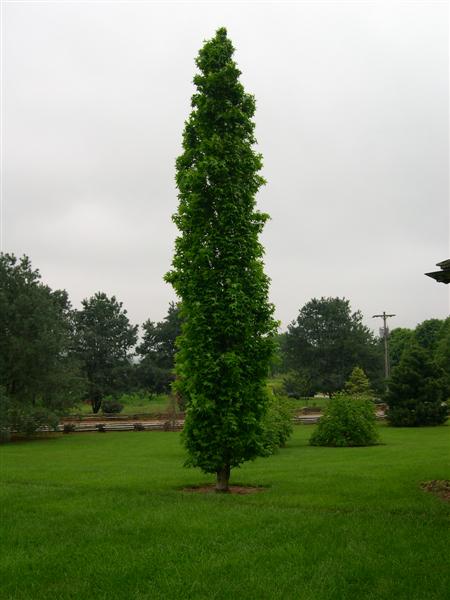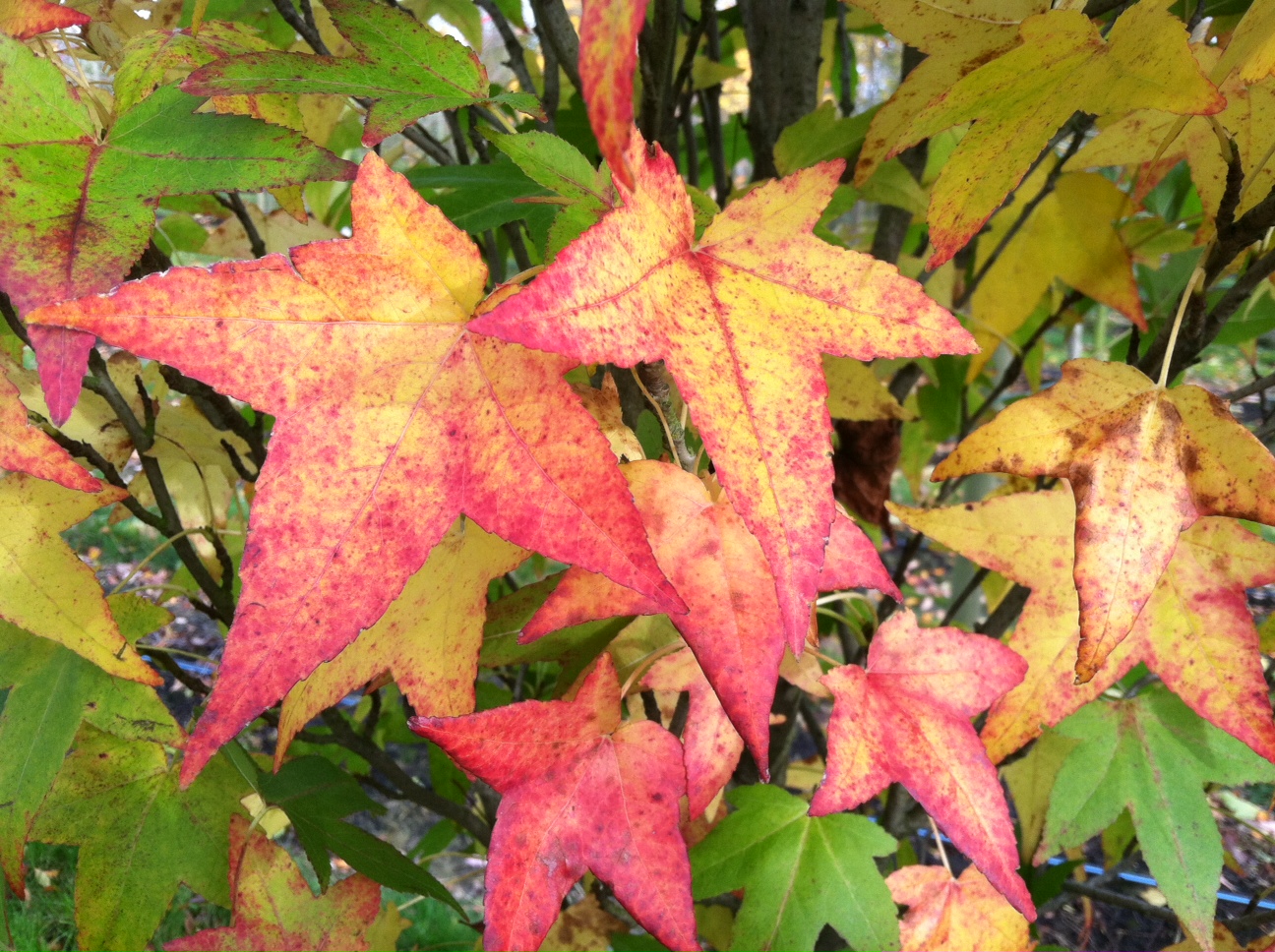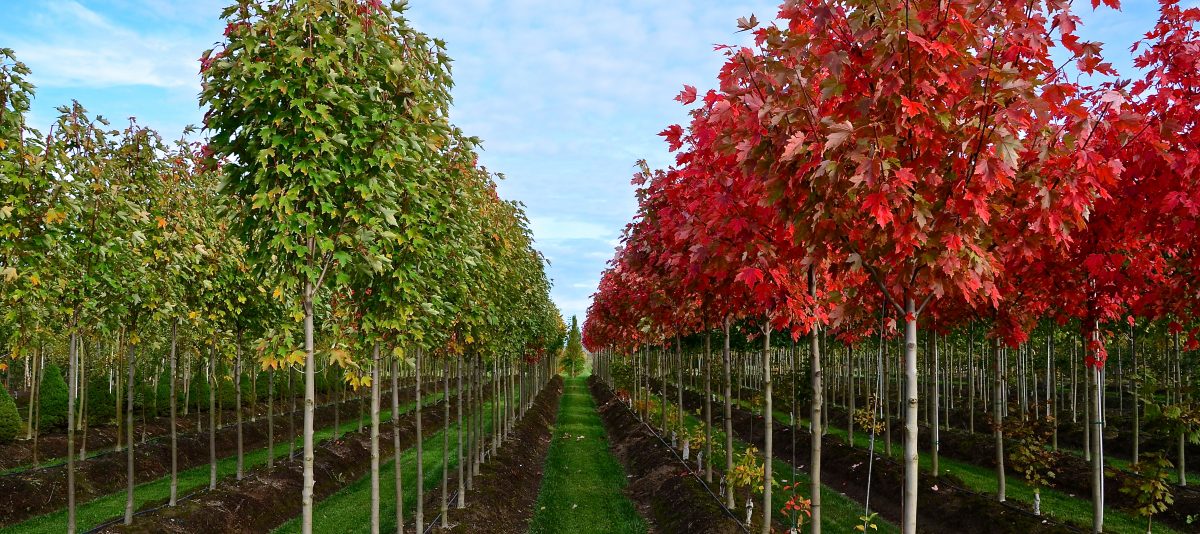Slender Silhouette Sweetgum
Liquidambar styraciflua ‘Slender Silhouette’
 There are few trees that measure up to the promise of being narrow, but Slender Silhouette Sweetgum does, even into maturity. Imagine a tree that could reach 50 feet tall and possibly be only 5 to 7 feet wide. Photos and documentation give a range of 3 to 10 feet wide but this tree appears to lean towards the narrower width. OK, this is not a tree for just any place but on occasion we find ourselves looking for a cultivar that will not eventually grow into windows, wires and buildings.
There are few trees that measure up to the promise of being narrow, but Slender Silhouette Sweetgum does, even into maturity. Imagine a tree that could reach 50 feet tall and possibly be only 5 to 7 feet wide. Photos and documentation give a range of 3 to 10 feet wide but this tree appears to lean towards the narrower width. OK, this is not a tree for just any place but on occasion we find ourselves looking for a cultivar that will not eventually grow into windows, wires and buildings.
The challenges of Sweetgums varieties have been discussed before and I believe it is too early to suspect any great difference in those characteristics for this variety until proven otherwise. Their root systems are probably shallow and aggressive. They may have some brittleness and be subject to winter snow break. They will have moderately large spiky seedballs that can be a nuisance.
On the positive side, they will grow in almost any type of soil, even wet soils, they are a proven tough urban species, and they can have a wide range of fall colors, better in some years than others on the coast and best in the colder climates.
From our experience, Sweetgum species can be a little stubborn in transplanting, so a good root system and proper planting techniques are important. They are sometimes late for leaf emergence, and in addition keep their leaves a bit too long in the fall contributing to its snow breakage potential. When they are young and more susceptible to weather damage, early fall root pruning is a trick we use to speed up the fall dormancy clock.
New cultivars continue to emerge, most similar to other varieties. The Slender Silhouette Sweetgum is like no other form and will be perfect for those narrow locations near tall buildings, in building corners and between conflicting uses. They may also work well as a living fence along property lines in gardens, parks and golf courses.
Let me know if you have seen this cultivar in the landscape-and don’t forget the h when you spell it.
ISA Certified Arborist #0135
ASCA Registered Consulting Arborist #356
